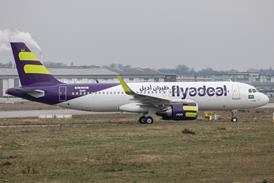The Wedgetail affair raises questions about how well the US military is adapting to the commercial nature of defence
Graham Warwick/WASHINGTON DC
Boeing's $4.2 million fine for violating US export control laws during the competition to meet Australia's Project Wedgetail airborne early warning and control (AEW&C) requirement illustrates the challenges facing US firms as they try to market advanced technology systems.
The Wedgetail affair also highlights the issue of how much control the US Government should exercise over the export of systems developed with private venture funding, in this case the MESA (Multirole Electronically Scanned Array) active-array radar developed by Northrop Grumman for Boeing's Next Generation 737-based AEW&C aircraft.

On a wider scale, the affair raises questions about how well the US military is adapting to the increasingly commercial nature of defence acquisition programmes, abroad and at home.
Licensing reforms
While efforts are under way to reform the USA's labyrinthine licensing regulations, the government is cracking down on export control violations. Boeing was fined $10 million in 1998 for transferring technical information without approval to its Russian partners in the Sea Launch programme. Lockheed Martin was fined $13 million last year for allegedly providing China with sensitive information on rocket motors.
The latest fine is small by comparison because Australia is a close US ally and because no technology was actually transferred illegally. Most of the violations cited by the US Department of State involved offers of technology not covered by Boeing's export licence - almost all of which was later approved for release to the Australians.
The violations fell into three categories, says vice-president AEW&C programmes Patrick Gill. The first involved offering to transfer capabilities that were not specified in the licence. "We did not transfer any data, but now we know we can't even offer it."
Likely to have fallen under this category is Boeing's offer of radar transmit/receive modules based on titanium crystal alloy, which give greater signal amplification than the standard silicon germanium modules specified in the licence. "We misinterpreted the limits of our licence," says Gill.
The second category involved "the use of public domain data in making comparisons with other systems in the US inventory", says Gill. This refers to comparisons between the 737 AEW&C and the USAir Force's Airborne Warning & Control System (AWACS), provided as part of Boeing's bid. "The customer has to make his own comparisons," says Gill.
It is under this category that the company is likely to have violated the USA's tight controls on the disclosure of counter low-observable capabilities. The breaches investigated included the alleged release to Australia of classified radar signature data on a range of target types.
The third category involved a handful of instances, says Gill, "where we flat out made a mistake. We allowed firms which were not licensed to receive the information to be present at briefings."
The Wedgetail competition was unusual in that Australia was being offered a system that is not in the US inventory and was promised capabilities beyond those available to the US military. But this is increasingly the case, as firms seek export outlets for advanced systems developed with private-venture finance in the absence of a funded US military requirement.
Mistakes were made
"The issue was what we were authorised to offer in terms of radar performance," says Gill. "This is a privately developed radar, not in the US inventory, and mistakes were made in what we told the customer." Ultimately, he says, everything offered to Australia has been included in the final agreement which has been presented to US Congress for approval.
For both Boeing and Northrop Grumman it was crucial to secure a level of technology releasability that allows their system to be competitive with non-US offerings. "We have a much clearer picture on releasability today," says Gill. "We now understand better the capabilities of the system and what is releasable to export."
USA wants control
While more customers want to strike commercial deals directly with manufacturers, the USA still wants to control certain capabilities through the government-to-government foreign military sales (FMS) process. "We have a fairly clear way forward on what element is US FMS and what element is Boeing commercial," says Gill.
The MESA-equipped 737 AEW&C is a private venture, but it draws on years of US Government investment in AEW hardware and software. This raises concerns about the companies' ability to recover their investment when the government controls release of the technology. "We now have a lot more definition of how to protect US interests and technology and still have a product that is saleable," Gill says.
Source: Flight International























